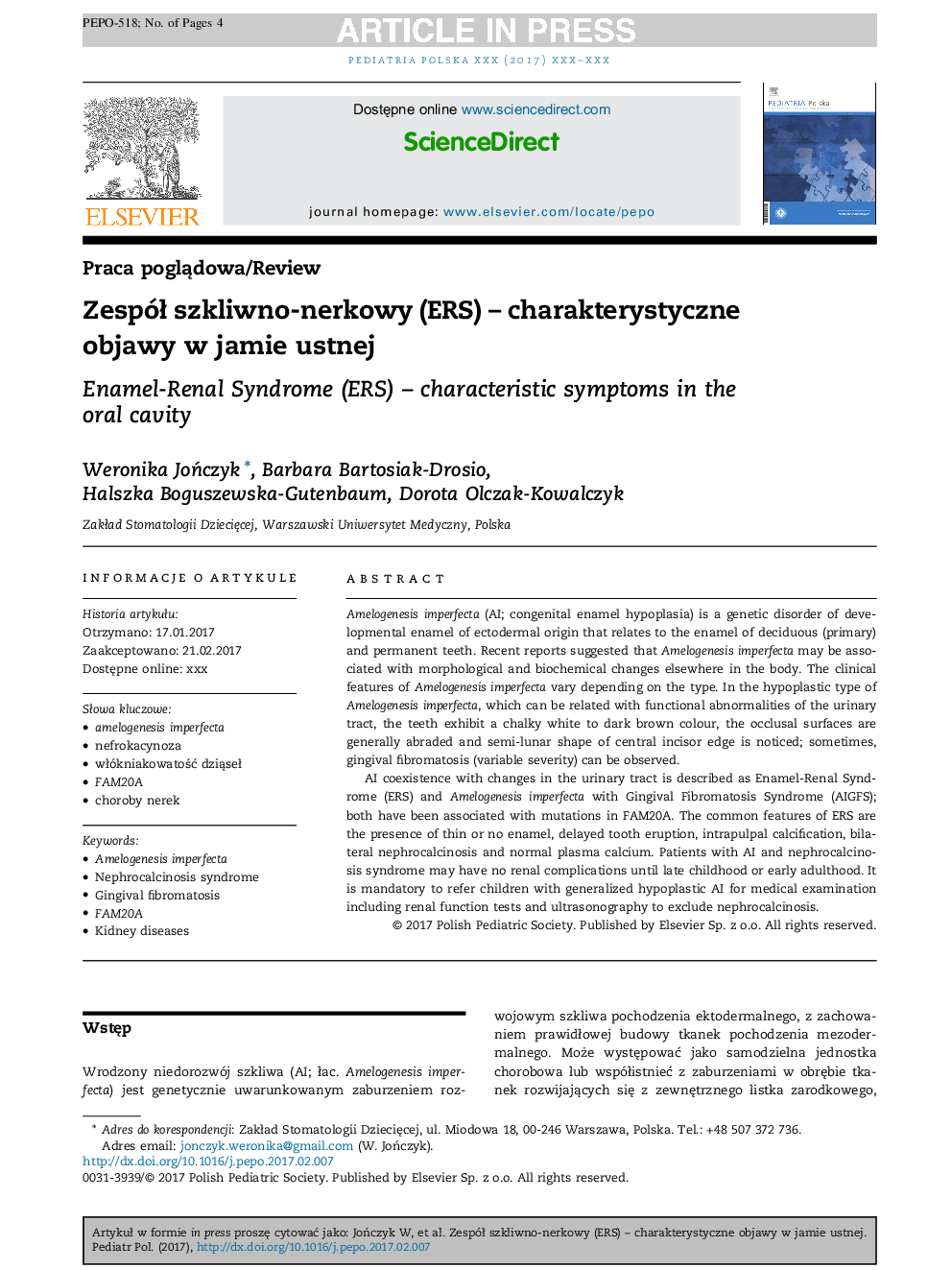| Article ID | Journal | Published Year | Pages | File Type |
|---|---|---|---|---|
| 8579586 | Pediatria Polska | 2017 | 4 Pages |
Abstract
AI coexistence with changes in the urinary tract is described as Enamel-Renal Syndrome (ERS) and Amelogenesis imperfecta with Gingival Fibromatosis Syndrome (AIGFS); both have been associated with mutations in FAM20A. The common features of ERS are the presence of thin or no enamel, delayed tooth eruption, intrapulpal calcification, bilateral nephrocalcinosis and normal plasma calcium. Patients with AI and nephrocalcinosis syndrome may have no renal complications until late childhood or early adulthood. It is mandatory to refer children with generalized hypoplastic AI for medical examination including renal function tests and ultrasonography to exclude nephrocalcinosis.
Related Topics
Health Sciences
Medicine and Dentistry
Dermatology
Authors
Weronika JoÅczyk, Barbara Bartosiak-Drosio, Halszka Boguszewska-Gutenbaum, Dorota Olczak-Kowalczyk,
